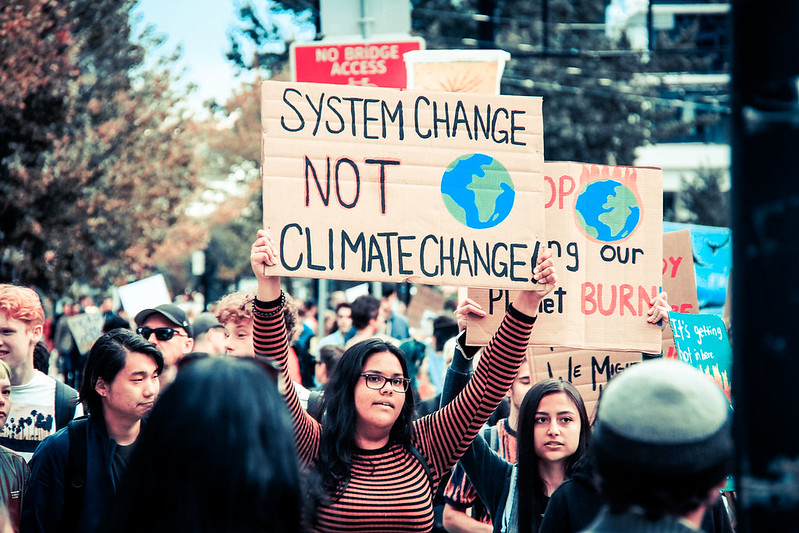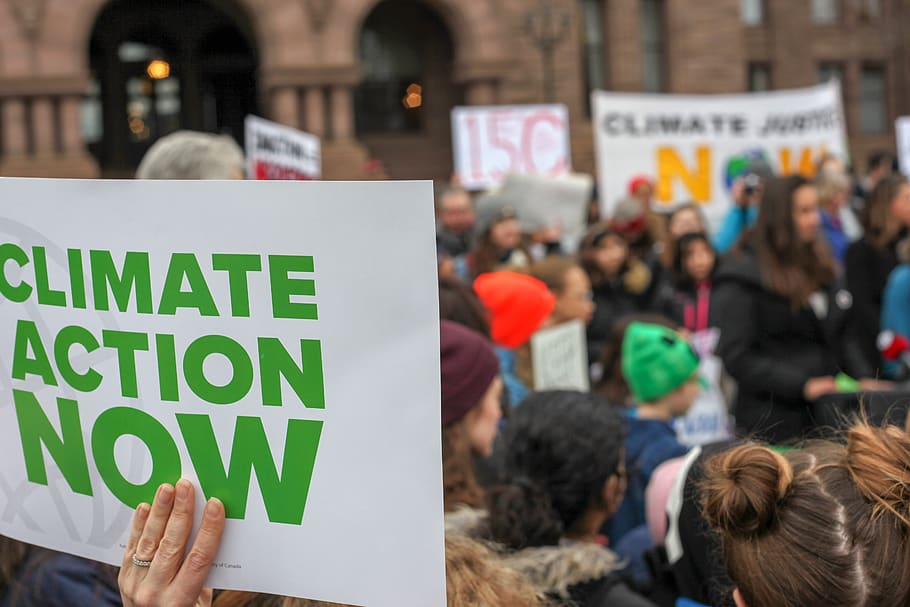As droughts, floods and other erratic weather events continue to be on the rise, there will be an increased burden on women holding responsibility for their families’ food water and energy needs.

The U.N. climate panel recently released its most comprehensive assessment of climate change yet. The report underscores that every corner of the world is affected by the climate crisis, and we have reached a time when we will need to make drastic decisions and take actions today to save generations to come.
Already, we have seen climate change fuel a rise in natural disasters, forced migration, loss of livelihood, rising food prices and regional conflicts over scarce resources such as water or fertile land. We’re also witnessing an accelerated loss of biodiversity, the contamination of soils, food and water, and conflicts driven by extractive industries.
However, what many overlook is the disproportionately catastrophic loss already endured by the Global South, especially in regard to the health and safety of women.
The climate crisis is here & no region is immune.
— United Nations (@UN) August 17, 2021
Latin America & the Caribbean experienced drought, tropical storms, heatwave, heavy rainfall, hurricanes & catastrophic wildfires in the Amazon in 2020.
More reasons for #ClimateAction from @WMO: https://t.co/0ZgHIS0CQD pic.twitter.com/cm9ajuzVkv
Countries that are the least responsible for causing climate change are the ones most exposed to and already suffering from its effects, particularly when it comes to food insecurity and nutrient deficiencies, reports show. For example, the second most food insecure country in the world, the Democratic Republic of Congo (DRC), has the second smallest carbon footprint. The Climate and Food Vulnerability Index found that the 10 most food-insecure countries in the world generate less than half a ton of CO2 per person. Collectively, they generate just 0.08% of total global CO2.
Indigenous women, Black women, women from low-income communities, women with disabilities and women from the Global South bear a significantly heavier burden from the impacts of climate change because of the historic and continued impacts of inequality; and, because they are more reliant upon natural resources for their survival and/or live in areas that have poor infrastructure.
Globally, women are responsible for half of the world’s food production. In most Global South countries, that figure goes up to 80 percent, with women also serving as the central stewards of seeds and agricultural biodiversity. As droughts, floods and other erratic weather events continue to be on the rise, there will be an increased burden on these women holding responsibility for their families’ food water and energy needs.
And while women are disproportionately vulnerable to the effects of climate change, female leaders in climate activism receive only 3 percent of total climate funding today and represent less than a third of those in decision-making roles under the U.N. Framework Convention on Climate Change (UNFCCC), the Kyoto Protocol and the Paris Agreement.
Women and girls must be included in the solution. They have long led climate action and environmental movements on the ground and driven stronger outcomes when involved in conservation efforts and natural resource management. In fact, studies show that their participation at all levels often results in improved responsiveness to citizens’ needs and cooperation across divided groups.

The Generation Equality Forum, a global event hosted by U.N. Women in Paris, recently convened women, girls and activists from across the world to catalyze support for the future of social and environmental sustainability and justice, with gender equality at its core. The Forum’s Action Coalition on Feminist Action for Climate Justice pushed forth a set of actions to facilitate inclusive and tangible progress over the next five years.
The coalition’s priority actions include increasing direct access to financing for gender-just climate solutions, in particular for organizations led by women and girls at the grassroots and rural level. Funding efforts led by Indigenous women, Black women, women from low-income communities, women with disabilities and women from the Global South will also be extremely important—a vision already set forth by the Black Feminist Fund, which recently became the first global fund addressing key issues facing Black women. The coalition also advocates for equal and meaningful participation in decision-making processes at all levels to develop climate responses that prioritize human rights.
There is a direct relationship between gender equality, women’s empowerment and climate change. Women, including Sunita Narain, Hindou Oumarou Ibrahim and Vanessa Nakate, have been at the forefront of climate action and environmental movements for years, and their involvement in conservation efforts and natural resource management has led to significant outcomes.
A new wave of feminist movements calling for climate and environmental justice has emerged to carry on the work of generations of women activists. As the environmental crisis intensifies, it is imperative that we continue to amplify and empower these movements.
Up Next:





